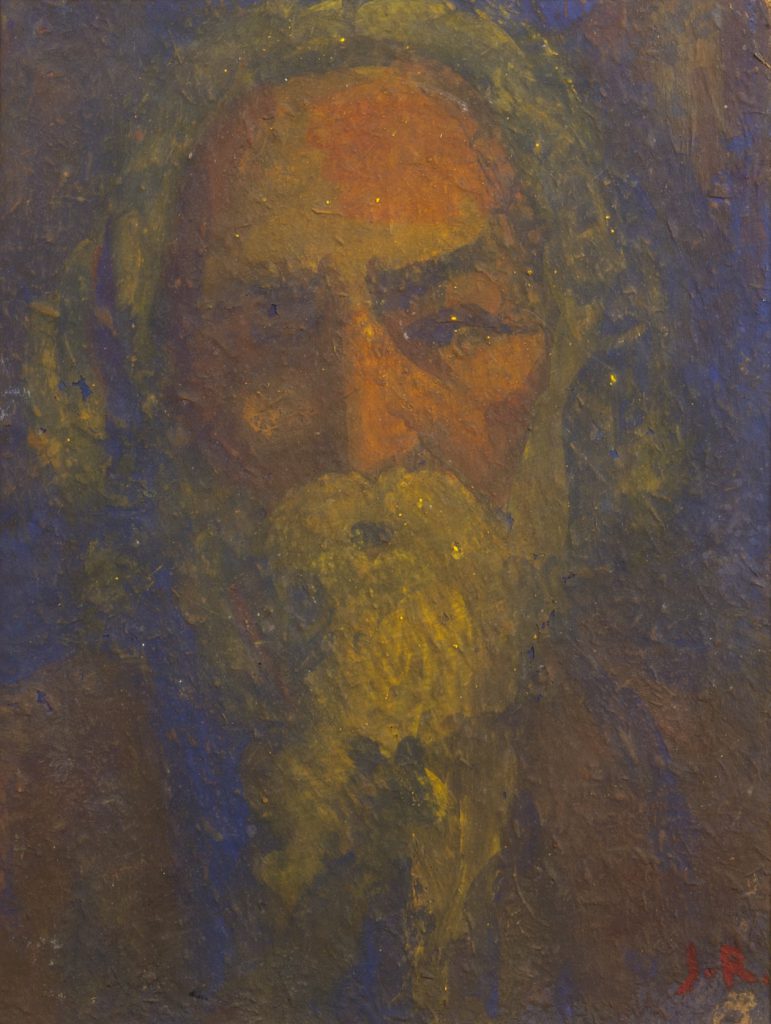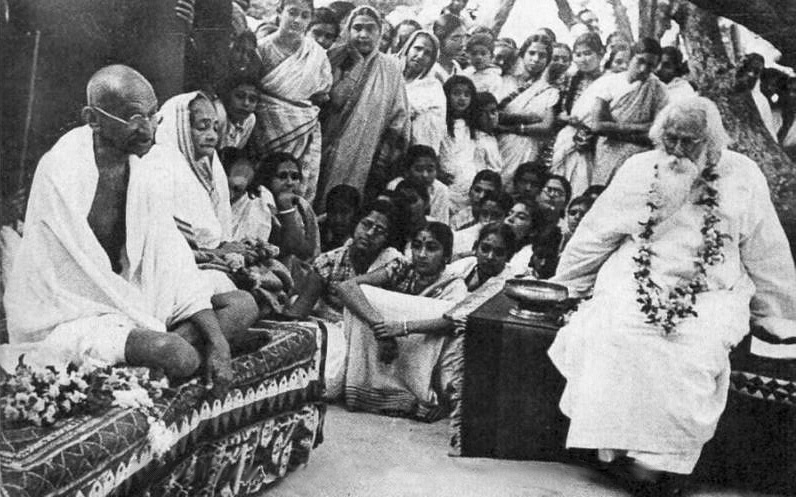Blogs
A Kaleidoscope of Dreams: Santiniketan
Khushi Bansal
A tribute to those from whom we learn about the journey of life, as we navigate our way through the pathways of Santiniketan.
In every step, in every tree, in every nook and corner at Santiniketan, one can sense Rabindranath Tagore’s presence, dedication, love and every ounce of his passion.
Abandoned and barren, the lands of Santiniketan, a source of peace and tranquillity, was first discovered by Debendranath Tagore in 1862. Literally translating to ‘an abode of peace’, this space became one of the most iconic centres of art, education and internationalism.

Portrait of Rabindranath Tagore by Jamini Roy, c. 1910, Tempera on board, MAC.00481
When Tagore was 17, he travelled to England to study. While there, he realised that he disagreed with the traditional structures of education that came hand-in-hand with colonialism. Therefore, in 1901 he discovered a school for children, which he believed was “an indigenous attempt in adapting to the modern method of education in a truly Indian cultural environment.” (Gupta 2002-2003, 26)
Santiniketan is located in the heart of nature. Surrounded by trees, plants and creepers, this school aimed at combining education with the development of a well-rounded personality. After Tagore won the Nobel Prize in Literature for Gitanjali in 1913, Santiniketan gained major prominence, leading to the establishment of Visva Bharati University in 1921.

Rabindranath Tagore with Mahatma Gandhi and Kasturba Gandhi at Santiniketan, 1940, Image credit: Wikimedia Commons
Tagore was an ardent believer in nurturing and protecting India’s cultural heritage. He once wrote, “Without music and fine arts, a nation lacks its highest means of national self-expression, and the people remain inarticulate.” (The Tribune, 2021) This sense of acceptance, inclusivity and expression makes Santiniketan special. The doors were always open for people to come and even stay for a while without being enrolled as a student.
In one such moment, Tagore invited Nandalal Bose to visit the University, who eventually went on to become the first principal of Visva Bharati’s fine arts department – Kala Bhavan. Bose was known to be a kind and caring teacher – the ingredients that were needed in a teacher to unleash true creative potential. Not only did Kala Bhavan go on to become one of the world’s best art schools, but Bose is even today hailed as one of the finest teachers in our country. Bose inspired, trained and guided an entire generation of what we know today as India’s leading modern artists, including K.G. Subramanyan, Benode Behari Mukherjee and Ram Kinkar Baij.

Nandalal Bose on the Postage Stamp of India in 1967. Image Credit: Wikimedia Commons
Where the mind is without fear and the head is held high;
Where knowledge is free;
Where the world has not been broken up into fragments by narrow domestic walls;
Where words come out from the depth of truth
(Poetry Foundation, n.d.)
The opening lines of ‘Where the Mind is Without Fear’, poem 35 from the Gitanjali, summarises Tagore’s views on education. Although the poem speaks about freedom and independence, Tagore implies that knowledge surrounds us, but we only truly understand it if we are open to change. Change comes from freedom.
To me, the ideals of Tagore and Santiniketan were way ahead of their time. The institution perhaps brought about the change people yearned for. Santiniketan feels like a lost home in the midst of a time where it stands as a symbol of creation and resilience. This article is an ode to every student, artist, and, more importantly, every teacher in their own sense.
A recent graduate from Central Saint Martins, London, Khushi Bansal is an aspiring curator with a keen interest in baking a perfect loaf of bread.
Bibliography
Gupta, Uma D. 2002-2003. “In Pursuit of a Different Freedom: Tagore’s world university at Santiniketan.” India International Centre Quarterly 29, no. No. 3/4 (Winter-Spring): 25-38. https://www.jstor.org/stable/23005814.
Poetry Foundation. n.d. “Gitanjali 35.” Accessed September 2, 2021. https://www.poetryfoundation.org/poems/45668/gitanjali-35.
The Tribune. 2021. “Of Tagore’s utopia that was once real: Amader Shantiniketan by Shivani.” https://www.tribuneindia.com/news/book%20reviews/of-tagores-utopia-that-was-once-real-294582.








